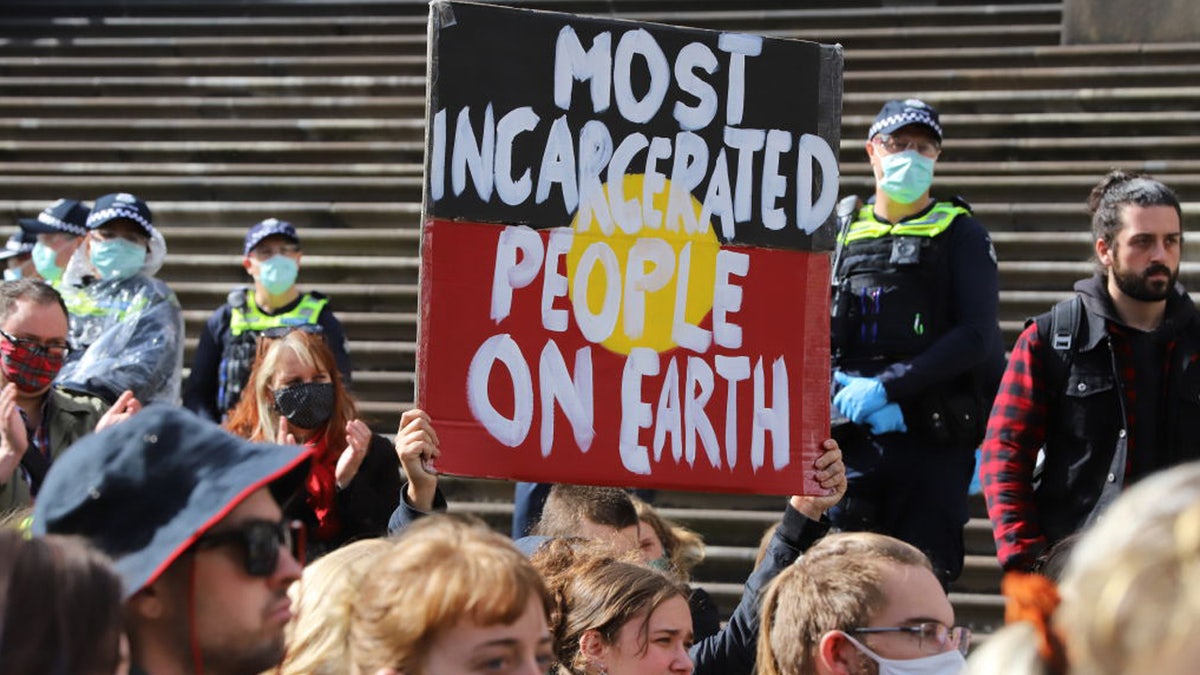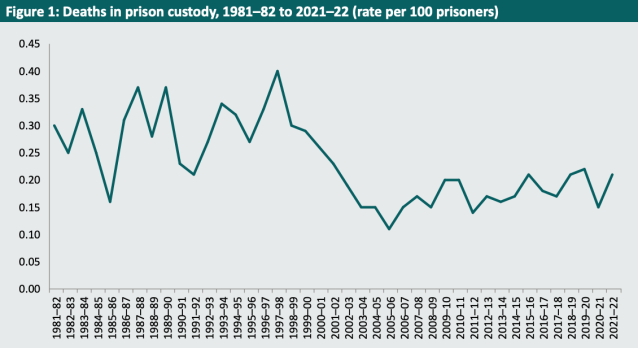
The end of a year is a time for reflection on the past 12 months’ highs, lows, successes and failures and perhaps Australia’s greatest failure in 2022 was the rate of Indigenous deaths in custody rising, more than 31 years after the Royal Commission into Aboriginal Deaths in Custody.
The Australian Institute of Criminology’s (AIC) annual report on deaths in custody released on Monday found 106 deaths in custody were recorded in the 12 months to June 2022. Of those, 24 were First Nations people — 16 died in prison custody and eight in police custody.
This brings the total tally of Indigenous deaths in custody since the 1991 Royal Commission into the trend to 516.
But three decades later and two and a half years since the massive Black Lives Matter movement in Australia that saw tens of thousands marching against over-incarceration of First Nations people, things are only getting worse. So allow us to paint you a picture by numbers to close out 2022.
First Nations over-imprisonment
It’s widely known that Aboriginal and Torres Strait Islander peoples are the most incarcerated on Earth.
They made up 32 per cent of Australia’s prison population and represented 22.6 per cent of deaths in custody in the last financial year, but the 2021 Census showed they were just 3.2 per cent of our total population.
This overrepresentation fuelled outcry in the 1980s which spurred the establishment of a Royal Commission in 1987 under Labor Prime Minister Bob Hawke.
The commission was tasked to examine the deaths of 99 Aboriginal people who died in custody between January 1, 1980 and May 31, 1989. By 1991 it had prepared a final report with 339 recommendations for how to stop First Nations people dying while under the care of law enforcement.
It found that Indigenous people weren’t necessarily more likely to die in prison than non-Indigenous people, but they were far more likely to be arrested.
31 years later, the recommendations are still relevant and more pressing than ever as First Nations people not only continue to die in custody but are being imprisoned and dying in prison at an escalating rate.
The number of First Nations people in prison rose 5 per cent between July 1, 2021 and June 30, 2022 and the death rate of Indigenous prisoners rose from 0.09 per 100 to 0.12 per 100.
Of the 516 Indigenous people who died in custody since 1991, 335 were in prison, 177 in police custody and four in youth detention. And it’s likely more went undocumented.
Deaths in custody
Australia not only has a problem with racism in its police, prison and justice systems, but also a violence and negligence problem.
The number of prisoner deaths has bounced around since the records began in 1980 but has been gradually lifting in the last 20 years.
Between July 1, 2021 and June 30, 2022 there were 84 deaths in prison custody, which is 18 more than the year before.
The rate of prisoner deaths also ticked up — from 0.15 per cent in 2021 to 0.21 per cent in 2022.

Most of these deaths were recorded as “natural causes”, but the median age at the time of death in police custody in 21-22 was 39.5 years old.
In November 2021, a 26-year-old Aboriginal man at Shortland Correctional Centre in Newcastle died after he was found unresponsive in his cell. Nine days later, 43-year-old Glen Francis died in Queensland’s Maryborough Correctional Centre after he was also found unresponsive in his cell and could not be revived. Would these relatively young people have died naturally had they not been in prison?
What’s going to happen in 2023?
We have a new Labor government and a promise for a referendum to enshrine an Aboriginal and Torres Strait Islander Voice to Parliament in the Constitution. If the public votes yes, it could herald significant changes for First Nations’ rights and welfare. It would be a good step, but a small one that wouldn’t affect much action for another few years.
One of the key recommendations of the Royal Commission into Aboriginal Deaths in Custody was also to raise the age of criminal responsibility because, in Australia, about half the children in youth detention on any given day are Indigenous. Under Australia’s cruel laws of criminal responsibility, some are as young as 10 years old.
In September 2022, it was also revealed almost 31,000 children in Queensland’s youth detention centres were placed into solitary confinement in the 12 months prior, 84 per cent of which were First Nations. 84 per cent. Calls to overhaul the youth justice system were reignited.
Some jurisdictions have taken steps this year to raise the age, but lifting it to 12 instead of the UN-recommended 14, or committing to raise it in four years’ time, is simply not enough.
We know so much about racism and inequality in this country now; we knew so much in 1991. How many more decades will it take before the AIC’s annual report records no deaths in police custody?



